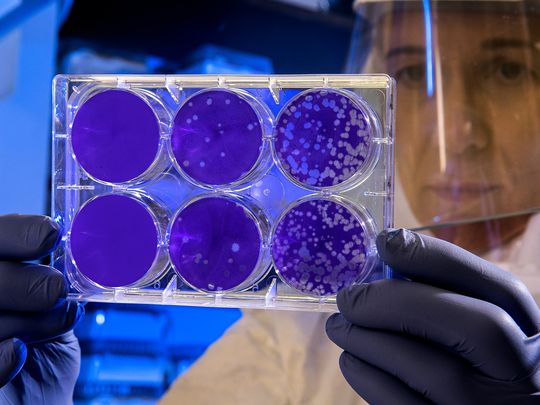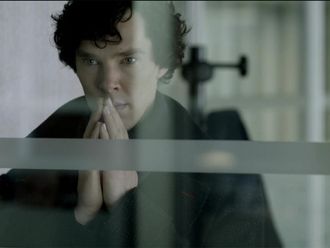
There’s likely no place in the world that has seen more failures and innovative successes than the humble laboratory.
Click start to play today’s Word Search, where you can find lab gear, from a ‘beaker’ to a ‘pipette’.
Every day, scientists around the world conduct experiments, starting with an ‘if’ question, following it up with ‘then’, and observing what happens. Their striving and questioning spirit has been responsible for a multitude of life-changing discoveries over the past generations.
However, there are a handful of science experiments that have stood the test of time in showcasing intelligent inquiry, with results that changed the world forever. Here are a few to note, according to a December 2019 report in the US-based science magazine Discover:
1. Measuring the world
How big is the Earth? Although the question was posed in many ancient cultures, it was a Greek scholar named Eratosthenes who came up with a stunningly accurate value, at the end of the third century BC. Eratosthenes was a memorable character at the time – his critics nicknamed him ‘Beta’, after the second letter of the Greek alphabet, because he was known for moving so often from one field of study to the other that his contemporaries thought him only second-best in each of them. But Eratosthenes didn’t let that stop him – his mental dexterity landed him a position as chief librarian at the famed library in Alexandria, Egypt. Here, he heard of a well in Syene (modern-day Aswan), where the sun shone straight down at noon during the summer solstice, and cast no shadows.
Curious, Eratosthenes measured the shadow cast by a vertical stick in Alexandria on the same day at the same time. He then concluded the angle of the sun’s light there to be 7.2 degrees, or 1/50th of a circle’s 360 degrees. Since Eratosthenes was aware that the Earth was a sphere, he knew that if he could calculate the distance between Alexandria and Syene, he could multiply that figure by 50 and calculate the Earth’s curvature. His final answer turned out to be 45,866km – incredibly close to our planet’s actual circumference of 40,072km. Eratosthenes’ keenness for geography actually led him to coin the name of the field, and today, he’s known by a better nickname than Beta: the father of geography.
2. The colour of light
Long before Isaac Newton became famous for inventing the laws of motion, calculus and universal gravitation, he was a college student. In 1665, a plague broke out in his college town of Cambridge, so Newton had to return home to the English countryside. There, he picked up a prism from a local fair – a toy that allowed light to pass through and create a splash of various colours. At the time, the prevailing thought was that light takes on colour from the medium it transits – for instance, sunlight passing through stained glass. But Newton was unconvinced.
He set up a prism experiment by cutting a hole in a window shutter and allowing a single beam of light to pass through two prisms. He then blocked some of the resulting colours from reaching the second prism, effectively proving that different colours refracted differently through a prism. Newton then singled out a colour from the first prism and let it pass – alone – through the second prism, showing how it came out unchanged, completely unaffected by the prism. His homemade experiment successfully showed that colour is an inherent property of light itself – a revolutionary theory that established the field of optics.
3. Stressed starfish
In the 1960s, American ecologist Robert Paine’s starfish experiment threw conventional wisdom right out the window. At the time, ecologists believed habitats thrived through diversity. But curious to see what would happen if he intervened in an ecosystem, Paine decided to crowbar purple starfish off rocks in tidal pools along the coast of Washington state, and chuck them back into the Pacific Ocean. He found that removing a single species managed to destabilise the entire ecosystem.
Without starfish in the area, their main prey – barnacles – went wild, only to then be consumed by encroaching mussels. These shellfish then crowded out the limpets and algal species, resulting in a destroyed food web, where only mussels dominated the entire area. Paine called the starfish a keystone species – it was a game-changing concept, and meant that not all species contribute equally in a given ecosystem. His discovery had a major impact on conservation efforts, and established an ecosystem-based management strategy.
What do you think of these experiments, both in and outside the lab? Play today’s Word Search and tell us at games@gulfnews.com.







